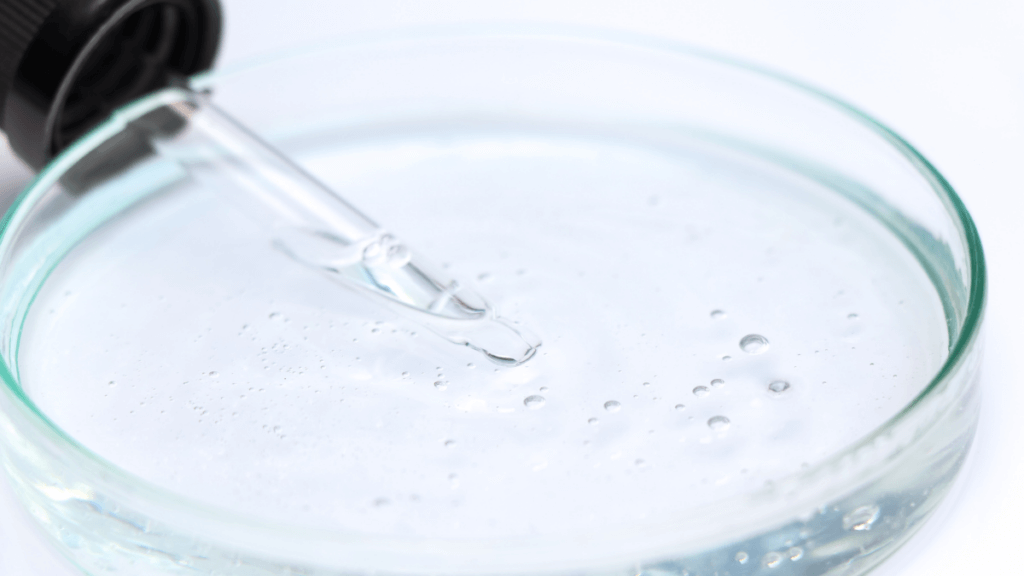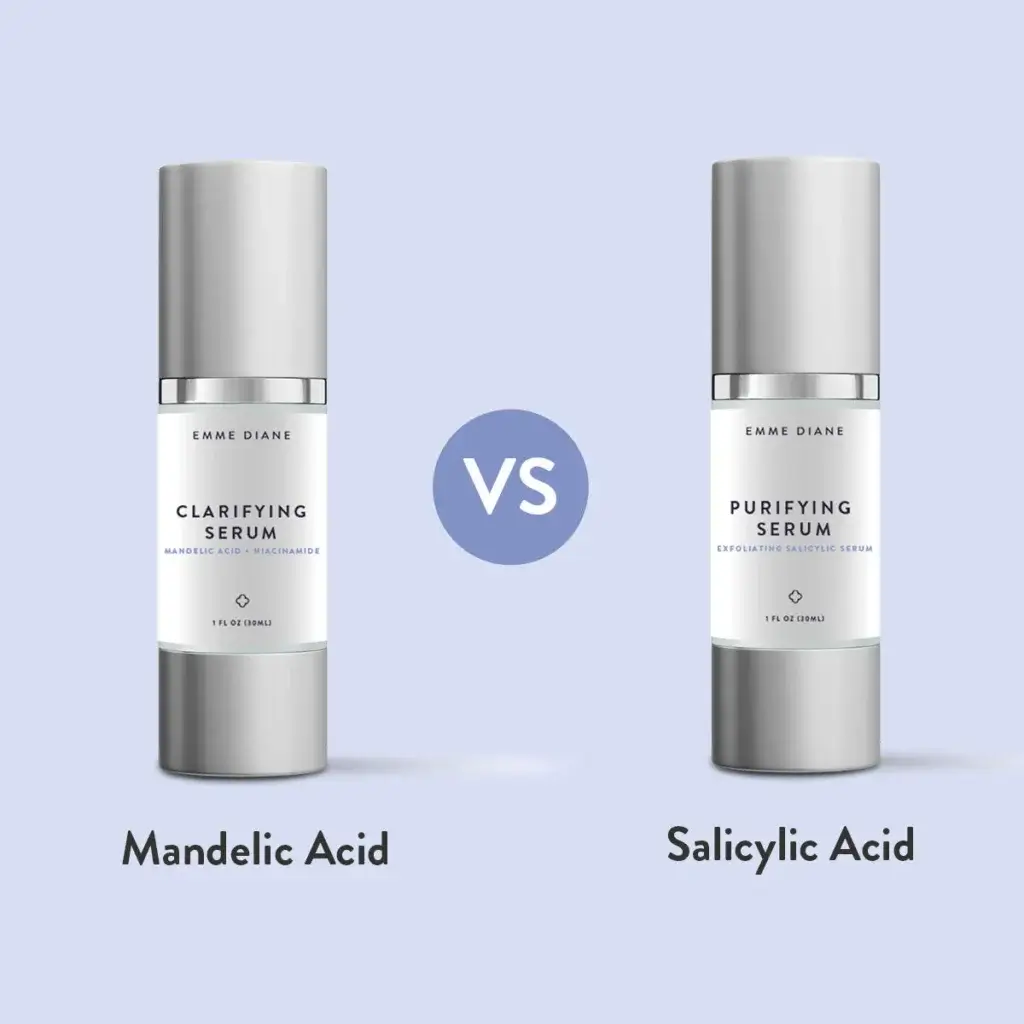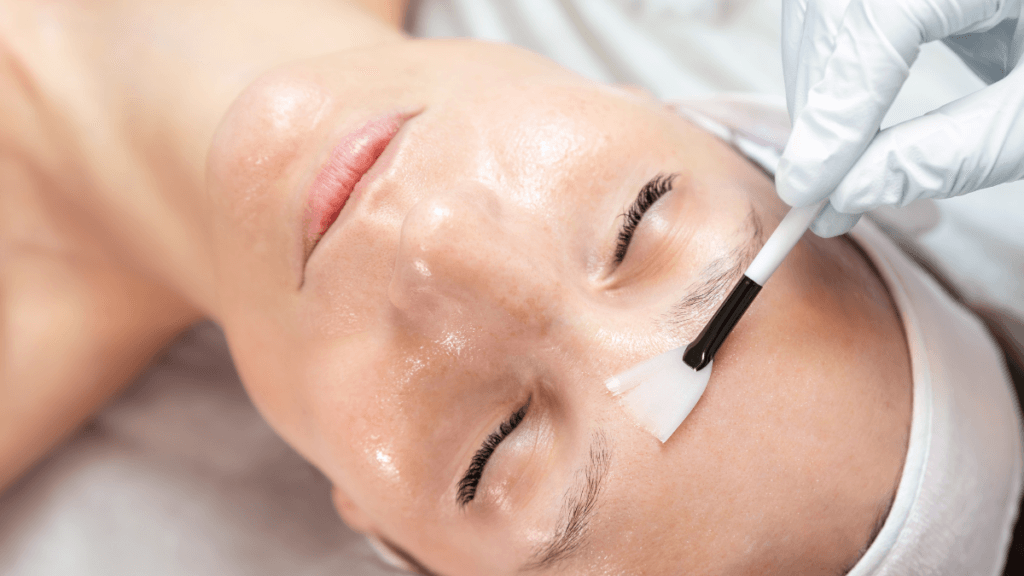Are you considering getting a chemical peel?
Then Ⓐ, welcome.
And Ⓑ, do you know the difference between a Mandelic and a Salicylic chemical peel?
Because choosing the right one for your skin really makes a world of difference. To sum it up, a chemical peel is a chemical treatment used to improve and smooth the texture of your skin. However, depending on how much smoothening is required is the differentiating factor.
Even though a Mandelic and Salicylic acid peel shares a common goal of rejuvenating your skin, their compositions, mechanisms, and how they target your skin condition differs, and that is what we will be discussing today.
Understanding The Basics

Two very popular types of chemical peels are the Mandelic acid peel and the Salicylic acid peel. Let us begin with the Mandelic acid chemical peel.
The Mandelic acid peel is derived from bitter almonds, as Mandelic acid belongs to the alpha hydroxy acid (AHA) family. It boasts a larger molecular structure compared to other AHAs like Glycolic acid, making it gentler on the skin.
Mandelic acid penetrates the skin gradually, making it suitable for sensitive skin types. Its exfoliating properties work wonders in addressing acne, hyperpigmentation, and fine lines.
Next we have the Salicylic acid peel. Unlike the Mandelic acid peel, the Salicylic acid peel falls under the beta hydroxy acid (BHA) category. Extracted from willow bark, this lipophilic compound dives deep into your pores, making it a highly effective peel fighting the good fight against acne and overall congested skin.
The Salicylic acid peel exfoliates your skin by dissolving sebum and debris within your pores, making it an excellent choice for oily and acne-prone skin types.
The Battle Of The Benefits
Mandelic Acid Peels
Gentle Exfoliation: Mandelic acid peel’s larger molecular size allows for a slower penetration rate, minimising irritation and making it suitable (and a great chemical peel) for sensitive skin.
Combatting Hyperpigmentation: It inhibits melanin production, making it effective against hyperpigmentation, melasma, and uneven skin tone. A for away.
Acne Control: If you struggle with acne, then a Mandelic acid peel may just be for you, With its antibacterial properties, a Mandelic acid peel helps eradicate acne-causing bacteria while preventing future breakouts.
Anti-Ageing Effects: Stimulating collagen production, a Mandelic acid peel aids in reducing the appearance of fine lines and wrinkles, resulting in firmer, youthful-looking skin.

Salicylic Acid Peels
Deep Pore Cleansing: A Salicylic acid peel’s ability to penetrate deep into your pores makes it highly effective in unclogging pores making this chemical peel a great treatment to reduce blackheads, and prevent acne.
Oil Control: By regulating sebum production, a Salicylic acid peel minimises excess oiliness, making it ideal for oily and combination skin types.
Inflammation Reduction: This chemical peel’s anti-inflammatory properties soothe redness and irritation associated with acne, making it a go-to for acne-prone individuals.
Exfoliation: A Salicylic acid peel’s exfoliating action promotes cell turnover, resulting in smoother, clearer skin with continued use.
Choosing The Right Peel
As with any aesthetic procedure, discuss your procedure with your aesthetician as they will evaluate your skin type, and advise you best in regards to which chemical peel/aesthetic treatment is best for you.
For acne-prone skin, a Salicylic acid takes the lead with its deep pore-cleansing properties and oil-controlling abilities. Its anti-inflammatory action also helps calm existing breakouts, making it a potent ally in the fight against acne.
For sensitive skin, a Mandelic acid emerges as the winner due to its gentle exfoliation and lower risk of irritation. Its anti-inflammatory and antibacterial properties make it suitable for those with sensitive, acne-prone skin seeking a milder solution.
For hyperpigmentation, a Mandelic acid also steals the spotlight (and the show) with its ability to inhibit melanin production and address uneven skin tone. Its gentle nature makes it suitable for individuals with sensitive skin experiencing pigmentation concerns.
For anything anti-ageing, both the Mandelic and Salicylic acid peels offer benefits in reducing the signs of ageing, but the Mandelic acid’s collagen-stimulating properties give it an edge in the anti-ageing arena, particularly for those with sensitive skin.
While a Mandelic and Salicylic acid peel offers numerous benefits, it is essential to exercise caution and consult your dermatologist/aesthetician before booking an appointment.
Let Us Wrap It Up
When considering getting a chemical peel, a Mandelic and Salicylic acid peel stands as powerful allies in the journey to radiant and healthy skin.
BUT, while both offer remarkable benefits, understanding their differences and suitability regarding your specific skin concerns is key to making an informed decision.
Whether battling acne, hyperpigmentation, or the signs of ageing, consulting with your dermatologist/aesthetician can guide you toward the best peel best suited to your skin’s needs and type to ensure optimal results and a complexion you will love to flaunt.


